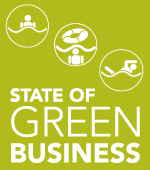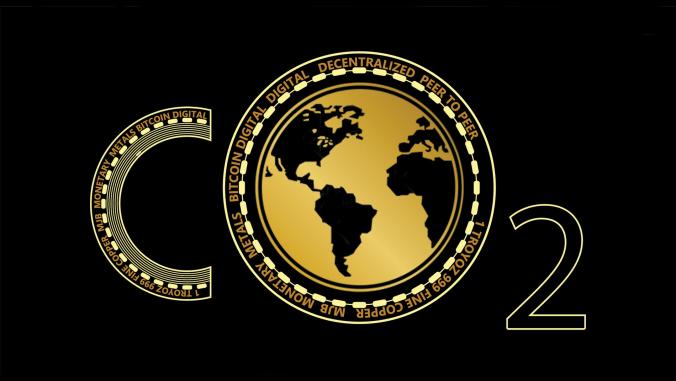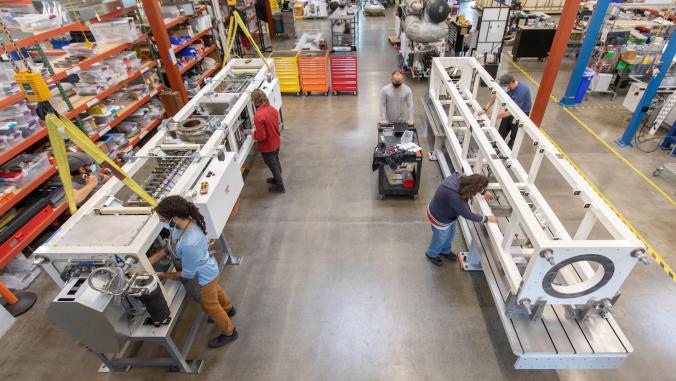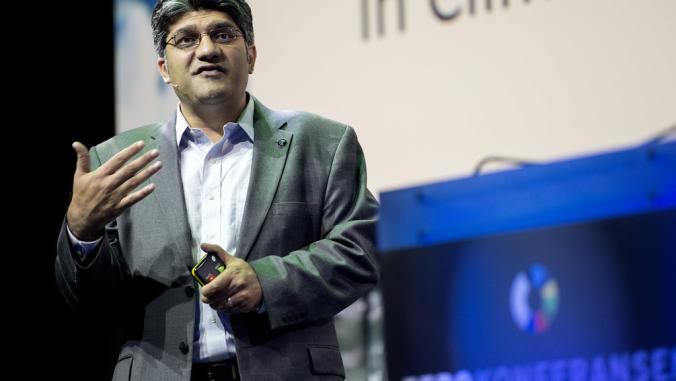Winning the Sustainability Battle, Losing the Carbon War?
<p>As head of the Carbon War Room, Jigar Shah has a gigaton-sized challenge ahead of him; and though he's plenty frustrated at the slow pace of progress to date, but sees some rays of light in getting business on board with major emissions-reduction efforts.</p>

In establishing the Carbon War Room, Richard Branson, the British-born media and aviation billionaire, explicitly treats the threat of catastrophic climate change as one similar to the threat posed by a world war.
Taking this metaphor a step further, Branson appointed as his general Jigar Shah to head up the CWR. Nearly a year into the mission, however, Shah seems palpably frustrated.
Speaking with Joel Makower at GreenBiz.com's State of Green Business Forum in Washington today, Shah emphasized that the foot soldiers in this mission -- companies, policy makers and voters -- are waging a losing fight in this multi-decade struggle.
First some context on the scope of the fight. Shah reminded the audience that global greenhouse gas emissions are running at about 50 gigatonnes per year today, and are on track to grow to 60 gigatonnes by 2020 if economic growth and climate trends continue without change. To avoid catastrophic climate change of 2 degrees Celsius or more, scientists say we need to trim 17 gigatonnes from that trend by 2020.
Not surprisingly, technology is ready to help solve the problem, says Shah, who earned a reputation as a wunderkind of the solar business, and a fortune -- perhaps several hundred gazillion dollars, Makower joked -- as the founder of solar energy pioneer SunEdison in 2003. "You've got Bjorn Lomborg saying we can't do anything without more R&D. And policy people saying unless we pass a price on carbon, we can't do anything," said Shah. "That's just poppycock."
The deeper problem is a tendency to grasp at feel-good solutions without reaching for, or even acknowledging, harder, far more impactful steps.
Shah offered the example of turning off the taps while brushing your teeth: it's a painless, feel-good behavioral change promoted by countless green living advice columns. Yet compared to the 40 percent of water wasted through leaking pipes across our crumbling water networks, it's meaningless.
While Makower suggested you could pursue both lifestyle changes and long-term infrastructure goals, Shah batted back the suggestion. "It is an either-or decision," no matter how much we'd like to think otherwise.
Echoing psychological studies suggesting that consumers' interest in these issues peters out after a single action, Shah said: "There's very few people who react to [any environmental message]. So when an NGO mails out to 20 million people turn off your taps, they could just as easily say the more important thing is to actually fix this infrastructure." But the harder sell is all to rarely made, said Shah.
The problem is compounded by failures of incomplete information, Shah added. With scant understanding of the scale of the climate change challenge, for example, good intentions get diluted.
Consumers have, for example, been drawn to hybrids as a fix for the problem, with upwards of 300,000 sold yearly worldwide. But put that figure in perspective: "It would take 300 million Priuses to save a gigaton of carbon."
That's about four times the total number of cars likely to be sold this year. And if the goal is to squeeze 17 gigatonnes from the world's emissions, such steps don't amount to much. It's fine to buy green cars, but to think of them as a solution to climate change is not: "It's laughable," he said.
Such messages may sting the ears of corporations banking on sustainability and green product strategies, but Shah is confident there are countless opportunities to make meaningful cuts in emissions, and make money.
The market isn't always good at finding them however. "If I could solve this entire problem with a phrase, I could say climate change opportunities are the largest wealth creation opportunity on the planet," he said. "But it ends there." In reality every meaningful strategy with gigatonne potential is a complex challenge.
That complexity can be decoded. Consider CWR's focus on the ocean-borne shipping industry, which accounts for 2-3 percent of global emissions, and staggering amounts of conventional pollutants.
In a classic case of tenant-landlord economic inefficiency, since customers pay for fuel, a boat's owner has no strong incentive to splurge on efficiency upgrades. In one of its projects, CWR identified 40 technologies that saved fuel for shipping. These include lubricant paint, advanced propeller designs, and air-hull lubrication systems.
But none were being implemented because boat owners don't pay for fuel, they pass the costs onto shippers. To right this problem, CWR found a way to amass and publish data on the efficiency of 95 percent of the world's ships. When CWR talked to them about upgrades, "the ship owners said, we knew about these technologies, but weren't going to change until customers asked for it," Shah explained.
The result is that today, shippers are asking for only the most efficient ships, so older ships aren't being used, and are losing money. That's causing their owners to either upgrade or junk them.
By righting the "information asymmetry" that triggered this switch, Shah estimates, 450 million tons less carbon dioxide will go into the atmosphere by 2020. That's a big bite of the 17 gigaton goal: "Not the 20 million tons WalMart is desperately trying to save," said Shah. "And there are six environment organizations helping them to get there."
Check out details of CWR's shipping strategy here.
The failure to aim for bigger emissions reductions, Shah speculated, is partly caused by the atrophy of abilities to deploy big, long-term projects.
"No one has done infrastructure correctly in 30 years or more," Shah said. "Most corporations don't know what it looks like even to do infrastructure correctly any more. During the '50s and '60s when highways were built across the country, and the grids were built, there was a system that people understood," planners understood how to use eminent domain, lawyers, engineers and accountants all had fluency in this process. "Today, it's just full of lawsuits. So a company throws up their hands and sponsors the London Marathon instead."
And while the Obama Administration has helped attract interest to these issues, federal policy is also missing the forest for the trees for Shah.
Referring to federal programs for alternative energies, Shah asked: "Would I have created a loan guarantee program so byzantine that only 12 out of 5,000 applicants would get it? Did we put $20 billion into the Small Business Administration as part of the stimulus?"
No and no, Shah answered, asserting that the lack of business expertise in the White House has hurt efforts to restore job growth: "To suggest that Jeff Immelt, as head of [ Obama's outside panel of economic advisors] actually knows how to create jobs when I don't think he's created any jobs in the U.S. since he's been CEO, that's laughable. The Kaufman Foundation says 80 percent of jobs are made by business under five years in age, so why not put an entrepreneur in charge of that thing? I'm beside myself right now."
Frustrated as Shah is, he's offered a ray of hope that the global climate war can be fought most effectively at the local level, in the trenches of local planning meetings and elections.
"The transformation starts locally," he said. "The way you win this thing is get people in the room. Most public utilities commissioners have never seen 10 people in a room. When they're doing a water permit for a new coal plant, if 50 people showed up and said we'd rather have a neighborhood, they're gonna choose the neighborhood."
Photo by Goodwin Ogbuehi, http://flickr.com/photos/yoshikatsu.






